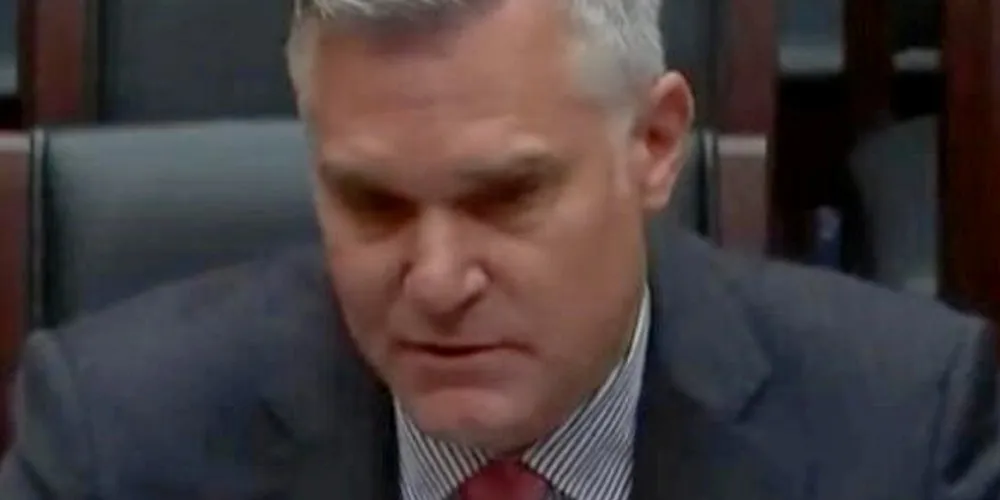US offshore wind stirs domestic dispute as House Democrats and Republicans spar over sector
Supporters of emerging industry testifying in a subcommittee hearing focused on green energy and jobs, while detractors pushed back on prices and immaturity of the sector

US offshore wind executives and labour representatives faced a barrage of questions from congressional sceptics at a hearing Friday before a governmental energy subcommittee, the members of which not only doubt the overall economics and feasibility of the industry now starting to take shape off the Atlantic but also the appropriateness of focusing on a nascent sector amid surging energy prices.
Orsted Offshore USA CEO David Hardy and American Clean Power (ACP) CEO Heather Zichal, both of whom testified before the House at a hearing entitled ‘Offshore Wind, Onshore Benefits: Growing the Domestic Wind Energy Industry’, placed the accent on the industry’s green energy credentials and the jobs and investment opportunities.
“The offshore wind industry is investing millions of dollars in a domestic supply chain, including investments in fabrication facilities, port upgrades, vessels, and workforce training,” Zichal told the subcommittee, highlighting major investments made or pledged by developers and contractors. “Additional policy levers can help drive an even greater degree of domestic offshore wind component and vessel manufacturing on a more ambitious timeline,” she added.
Committee chairman Frank Pallone Jr, representative from New Jersey, who hosted the subcommittee stated in his opening remarks that “rapidly expanding offshore wind will be critical to decarbonising the power sector”.
He pointed to his state as being the fore of the sector’s lift-off, with 7.5GW planned for 2035, supported by a $400m greenfield wind port that will be an offshore wind marshalling and manufacturing hub, saying: “I am excited about the progress in New Jersey and other states in the Northeast, and I hope that same momentum can spread to other offshore areas throughout the country.”
The House’s energy and commerce committee recently passed the Biden administration’s hotly debated ‘Build Back Better’ bill, originally tabled at $3.5trn but since pared down to $1.75trn-$1.9trn following debate in the Senate.
The bill includes investment into transmission grid upgrades essential for incorporating the government’s “national goal” of 30GW of having offshore wind power online by 2030, as well as new energy workforce training. The bill is one of several legislative and policy initiatives being considered by Congress aimed at mitigating climate change and spurring investment into clean-energy technologies.
House Republicans, however, questioned the wisdom of discussing an industry that won’t operate at commercial scale until mid-decade while global energy prices surged. US energy prices reached seven-year highs last month amid spiking demand fuelled by economic recovery, while in Europe natural gas prices rose 600% year-on-year, not helped by low wind and rain conditions across most of the EU.
“This hearing is a distraction from what Americans are really dealing with,” asserted West Virginia Republican representative David McKinley. “I can't understand why we are having a hearing on offshore wind when there are so many uncertainties that are we going to be facing in the next couple of months.”
Orsted’s Hardy pushed back against this assertion. “We are not going to solve a winter crisis in 2021, but we may prevent a crisis in 2025 of 2029, if we invest today,” he told the committee.
House Republicans placed blame for skyrocketing natural gas, gasoline, and propane prices on the Biden administration’s ban on new oil & gas leases in federal lands and the halting of the Keystone Pipeline project, while at the same time questioning the economics and reliability of offshore wind.
under the Trump administration, who was also testifying at the hearing.
The offshore wind executives stuck to their message, supported by an equal number of supporters who also trained the spotlight on the energy source’s low-carbon credentials and job creation potential, as well as its energy security and reliability benefits.
Orsted’s Hardy added as most offshore windfarms developed so far in the West are in the North Sea they were designed to operate in harshest of climatic conditions.
“In general, during those cold winters when the wind blows the most, that’s when we produce the most power,” he told the hearing. “In the northeast [US], we will actually offset the need for natural gas in heating.”
Several Republicans raised concerns that are shared by the offshore wind sector, particularly around supply chain and port infrastructure, as well as regulatory and permitting bottlenecks.
All energy infrastructure projects “face numerous obstacles, including local opposition, siting concerns, activism, environmental litigation, and a never-ending permitting process”, asserted Republican congressman Kelly Armstrong from North Dakota, the US’ second largest oil producer. “We have to deal with permitting and litigation reform,” she stated.
Streamlining the permitting process is a key goal of the offshore wind industry, with the process currently taking between four and ten years for projects. Amanda Lefton, head of the Bureau of Ocean Energy Management, which operates under the Department of Interior (DOI), to oversee development on the US Outer Continental Shelf, has promised a “whole of government” approach that aims to better coordinate a range of department and agencies to streamline permitting.
Recent holdups in permitting have caused Empire Wind, being developed by Equinor and BP, to seek legal postponement of a grid connection for the giant wind farm, while Connecticut State Pier continues to wait for government sign-off on the offshore wind port upgrade planned to be carried out by the US Army Corps of Engineers.